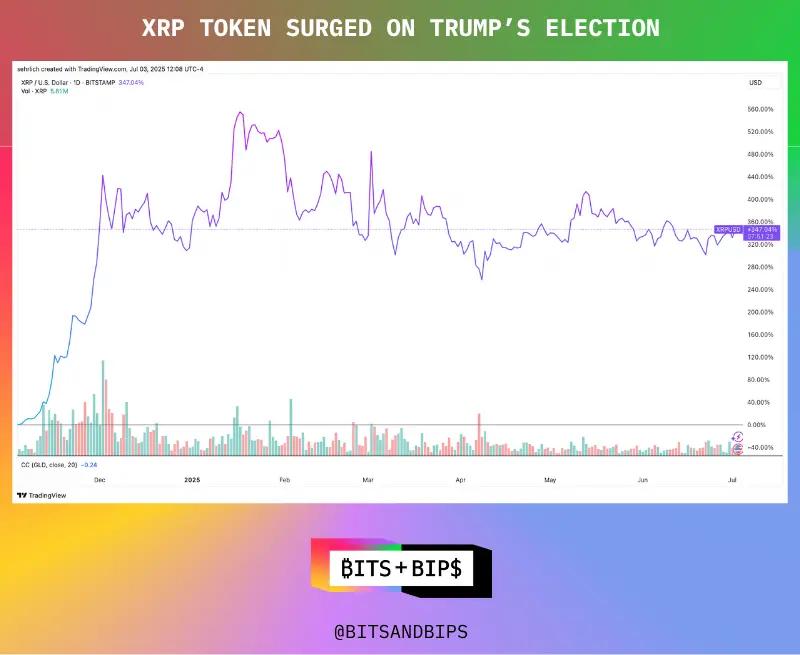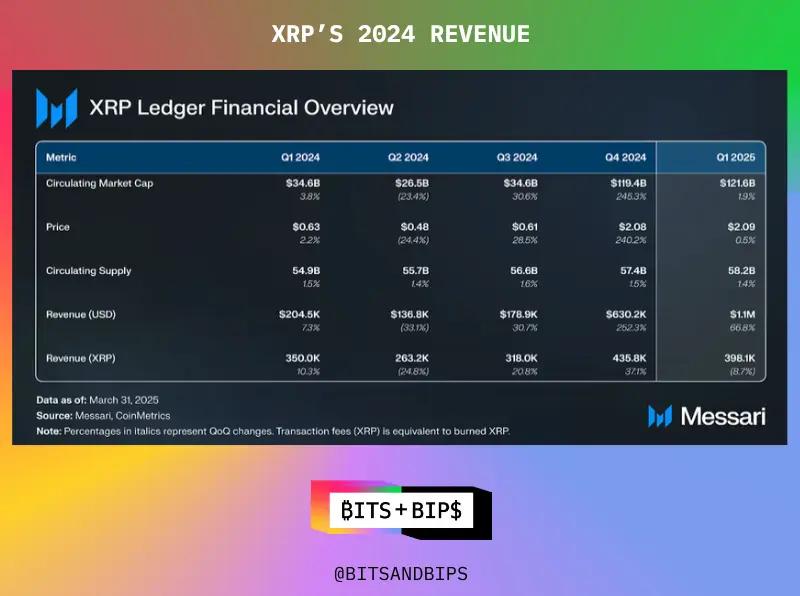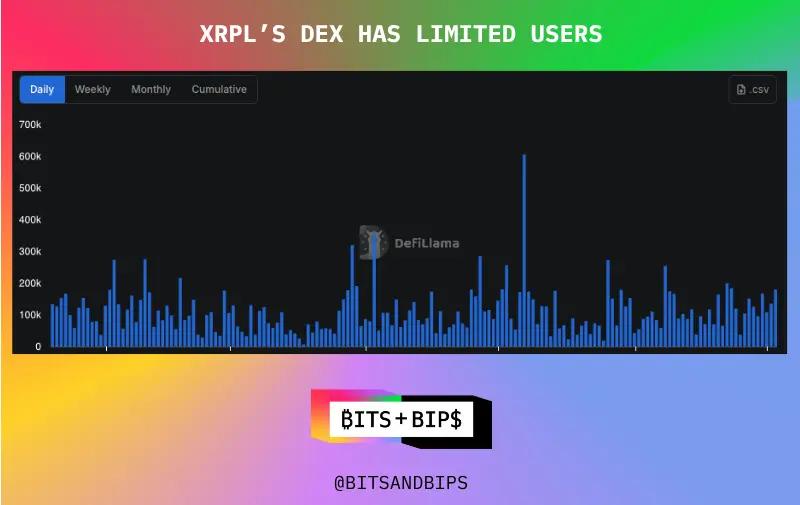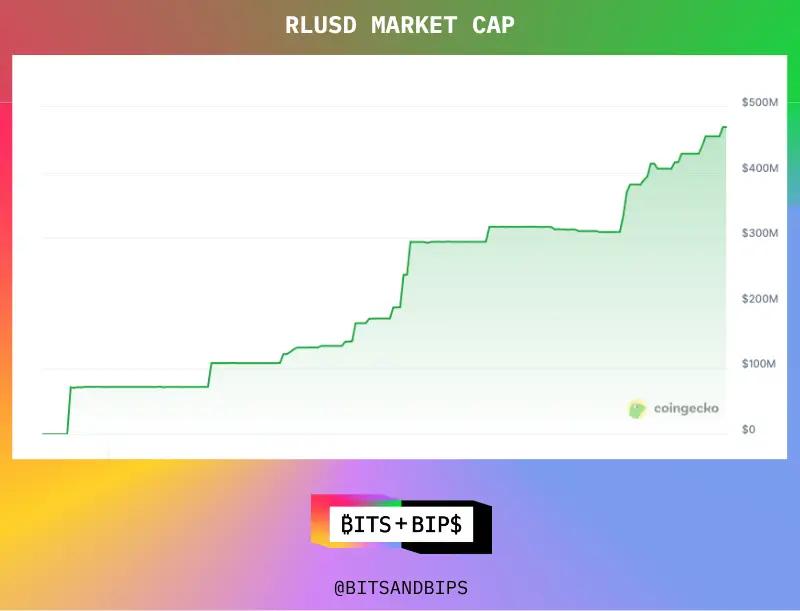Author: Steven Ehrlich
Translated by: TechFlow
After successfully escaping regulatory disputes with the U.S. Securities and Exchange Commission (SEC), Ripple Labs CEO Brad Garlinghouse seems to have been reborn.
On July 2, Ripple announced that it has applied to the Office of the Comptroller of the Currency (OCC) for a federal banking license, aiming to become the second company after Anchorage Digital to receive this honor. Additionally, its regulated custodial service provider in New York State, Standard Custody and Trust Company, is working to become the first cryptocurrency company to obtain a Fed Master Account to directly hold reserve deposits supporting its $469 million stablecoin RLUSD at the Federal Reserve.
"In line with our consistent compliance spirit, @Ripple is applying to the OCC for a national banking license," Garlinghouse stated in a tweet on July 2, "If approved, we will be regulated by both state (through the New York Department of Financial Services NYDFS) and federal levels, setting a brand new (and unique) trust benchmark in the stablecoin market."
Meanwhile, Ripple continues to improve the infrastructure of RLUSD. The company announced a partnership with AMINA Bank, headquartered in Switzerland, and collaborated with OpenPayd in London to establish a payment network using stablecoins.
That's not all. Since November 1 last year, XRP, the native token primarily held by Ripple Labs, has risen by 347%. Moreover, XRP might see its first U.S. spot ETF later this year. Nevertheless, XRP's price has remained largely stagnant over the past six months.

Despite the many questions surrounding the future of Ripple Labs, XRP Ledger (XRPL), and its stablecoin, the biggest mystery remains focused on its original token XRP.
As Ripple seems to shift its focus more towards the stablecoin market, some believe that if RLUSD truly expands in scale, it could potentially consume the potential demand that Ripple has been trying to create for XRP over the years.
For Ripple, this is indeed a new starting point, but old challenges still exist. To drive XRP's price into the next growth phase, certain key factors may need to change. Here are two main challenges to watch.
XRP's Actual Application Remains Limited
As early as March 2024, I published an article in Forbes titled "The Rise of Crypto's Billion Dollar Zombies". When writing the report, I decided to focus on XRP Ledger (XRPL).
I wrote in the article: "From a global capital flow perspective, Ripple Labs' current state is unremarkable, with almost no one believing it can disrupt the Belgian banking cooperative known as SWIFT, which handles up to $5 trillion in interbank transfers daily. Despite failing to achieve its core objective, Ripple's blockchain - a ledger recording XRP transactions - continues to operate normally. However, it is essentially useless, while the market cap of XRP tokens reaches $36 billion, making it the sixth-largest cryptocurrency."
This description is undoubtedly harsh, but in the article, I pointed out that despite XRPL's market cap of $36 billion at the time, its transaction fee revenue in 2023 was only $583,000. This equates to an astonishing 61,690x price-to-sales (P/S) ratio. More notably, Ripple had been established for 12 years by then, not a newly started startup. In my view, these data suggest that XRP is more of a meme coin than an asset with practical utility.
So, what has changed in XRPL since then? In 2024, XRPL's transaction fee revenue grew to $1.15 million, an increase of only $567,000 from the previous year. Meanwhile, its market cap grew from $33.32 billion at the beginning of 2024 to over $80 billion, reaching an eye-popping 103,826x price-to-sales ratio.
This data once again highlights the core problem facing XRP: despite continuously rising market cap, its actual application and economic benefits remain limited, struggling to support its high market valuation.

According to Messari's data, the activity on XRPL is insufficient to support its price increase. Its flagship decentralized exchange (DEX) daily trading volume is typically below $100,000. In comparison, the market leader PancakeSwap's daily spot trading volume exceeds $1 billion, not to mention the rapidly growing derivatives DEX industry, where two major exchanges, Binance and Hyperliquid, process transactions worth trillions of dollars monthly.

In the Non-Fungible Token (NFT) realm, XRPL is also clearly lagging. Messari's data shows that XRPL averages only about 550 NFT traders daily in 2024. Even in the current overall low NFT market, Ethereum still has around 5,000 active traders daily.
Additionally, XRPL appears inadequate in introducing native smart contract functionality. As its single payment-focused positioning gradually expands, smart contract functionality has become a "basic configuration" for blockchains. However, as of June 30, Ripple Labs launched an EVM (Ethereum Virtual Machine) compatible sidechain in collaboration with Axelar, attempting to compensate for this shortcoming. XRP will serve as the gas token and native asset for this new chain, creating potential demand sources beyond payment functions.
Nevertheless, Ripple still needs to make enormous efforts to create real, non-speculative user demand for XRP through this new direction.
What About RLUSD?
Moreover, XRP holders also need to consider how Ripple Labs' stablecoin RLUSD will affect XRP demand. After all, XRP was initially designed as a bridge currency to help banks complete currency conversions at lower costs and higher efficiency. However, some argue that launching a stablecoin might directly conflict with this goal, especially if RLUSD's promotion further consolidates the U.S. dollar's dominance. This not only aligns with the U.S. intention to maintain dollar hegemony but could also extend to countries and regions with insufficient dollar coverage.

According to CoinGecko data, the stablecoin market is growing at rocket speed. Currently, the total stablecoin supply has reached $254.79 billion, and the entire industry is still digesting Circle's (USD Coin issuer) extremely successful IPO last month. Meanwhile, the U.S. government is gradually approaching the passage of the GENIUS Act, which will be the first cryptocurrency-related law and establish rules for stablecoin future development. With massive funds flowing into this field and regulatory support, many believe stablecoins, not XRP, are the future of payments.
Nevertheless, I can still imagine a world where both coexist. After all, unless some emerging markets emulate El Salvador in adopting the dollar as official currency, foreign exchange conversion needs will persist. However, some argue that stablecoins are more suitable as bridge currencies due to lower volatility compared to XRP.
This view on demand for both tokens is also endorsed by Ripple Labs CTO David Schwartz. In an interview last spring around the RLUSD stablecoin launch, he stated: "Providing multiple paths for customers to improve their experience means you can acquire more customers. If we only rely on XRP, we can only tell customers 'no' where XRP is unavailable." However, compared to when Ripple Labs was founded in 2012, XRP's potential market size may have already shrunk.
Apart from the overall rising trend of stablecoins, another possible reason for Ripple's launch of RLUSD is the "red flag" shadow cast on XRP by the U.S. Securities and Exchange Commission's (SEC) enforcement action against Ripple Labs. Owen Lau, an executive director at Oppenheimer & Co, told Forbes in an interview in April 2024: "Ripple may feel they have no choice but to issue a stablecoin to convince banks and other financial institutions to collaborate with them. These institutions may be reluctant to hold or use XRP due to its price volatility and regulatory risks associated with the SEC lawsuit."
However, to achieve breakthrough growth for RLUSD and potentially return value to XRP, Ripple must act quickly. It is well known that the stablecoin market is currently dominated by two industry giants: Tether (market cap of $158.3 billion) and Circle (market cap of $62 billion). Ripple's best strategy might be to drive RLUSD's usage and value through its new sidechain, such as by providing incentives to promote RLUSD adoption, thereby increasing demand for XRP for gas fee payments. But this remains a hypothesis filled with uncertainty.
Currently, Circle and Tether and their tokens have already achieved widespread market distribution and are working to expand their ecosystem. Tether not only dominates the trading domain but has also announced that its tokens can be used to pay gas fees on a new blockchain called Stable. Circle has established a high-profile partnership with Coinbase, promoting USDC usage on its Base blockchain, and collaborated with Shopify to enable merchants to use USDC for payments.
Despite the attention on stablecoins, for RLUSD, this is not a "blue ocean market".
Circle and Tether and their stablecoins have achieved large-scale distribution and are striving to expand their respective ecosystems. Tether dominates the trading field and recently announced that its tokens will be usable for gas fee payments on a new blockchain called Stable. Circle, through its high-profile collaboration with Coinbase, is promoting USDC usage on its Base blockchain, while also partnering with Shopify to allow merchants to use USDC for payments.
Despite the attention on the stablecoin market, for Ripple's RLUSD, this is by no means a "blue ocean market".
Ripple's Ace Card
If Ripple Labs has an ace card, it is that it might be one of the most well-capitalized cryptocurrency companies globally. According to its Q1 2025 financial report, the company's wallet holds 4.56 million XRP, valued at approximately $10.27 billion. Moreover, the company has 371 million XRP in escrow accounts, valued at as high as $83.5 billion, which will be gradually unlocked in the coming years.
Although the company cannot completely recoup such a massive amount of funds if it attempts to sell all XRP at once, Ripple is almost impossible to face the risk of running out of funds.
For XRP holders, this means Ripple has unlimited resources to drive demand for its newly launched EVM sidechain while also supporting partnerships and use case expansions for RLUSD or XRP through funding.
However, all of this may not be important for XRP holders. After all, despite limited user growth in the XRPL ledger in recent years, XRP's price has still "soared against the trend" and was not significantly affected.






